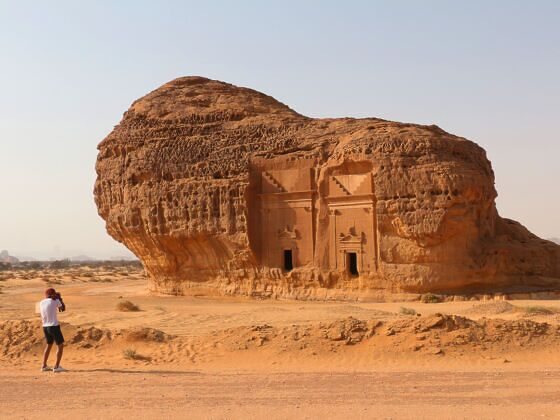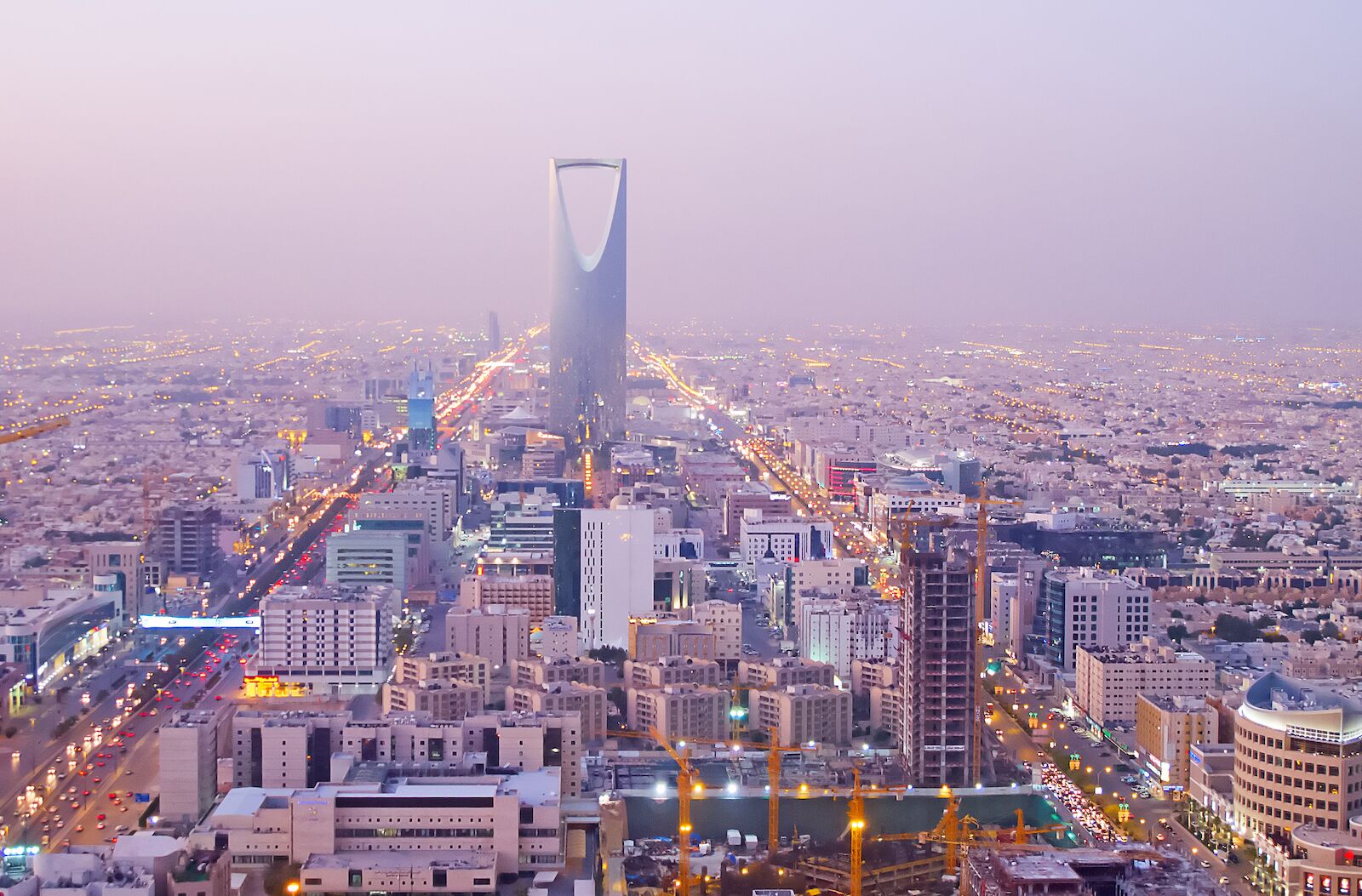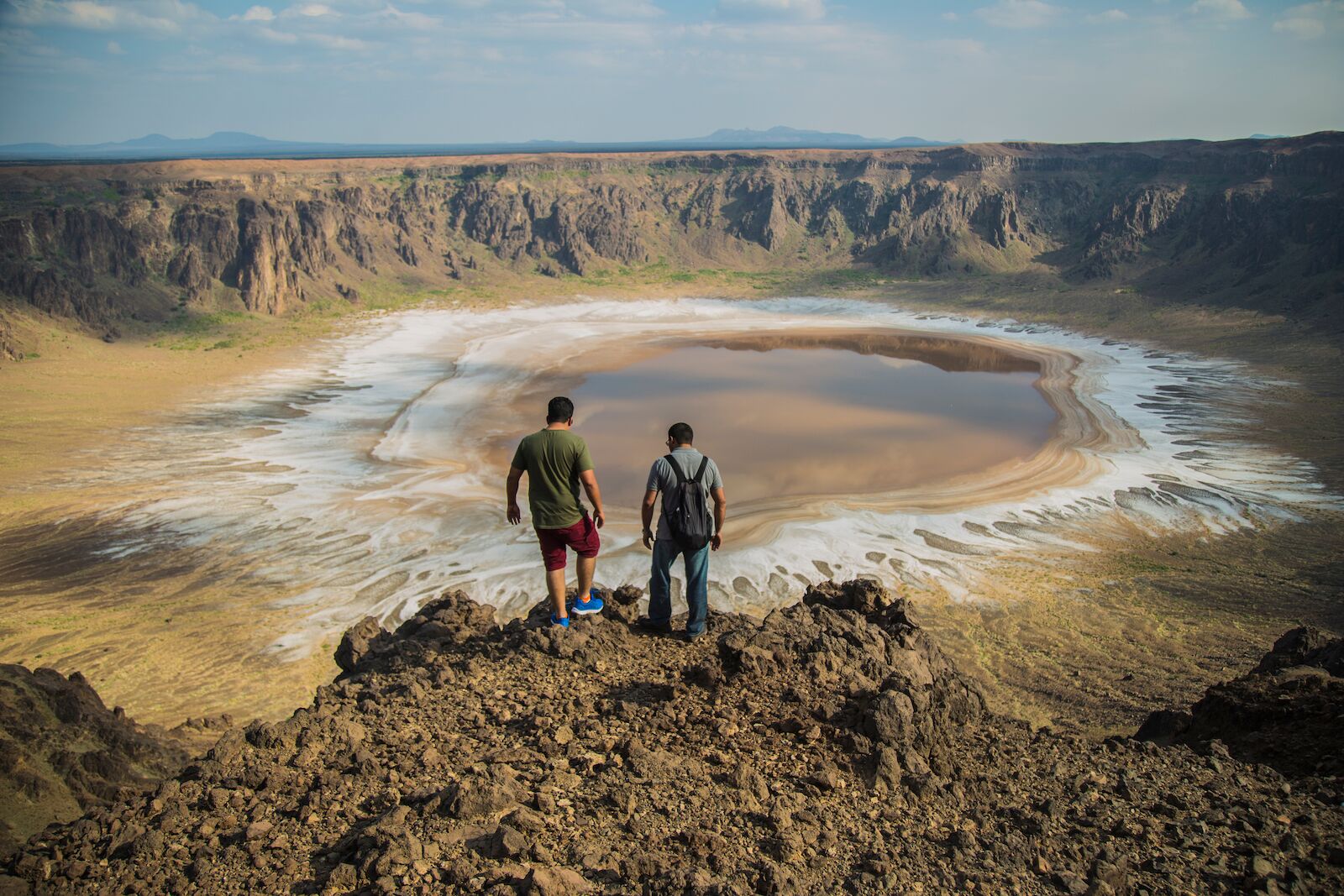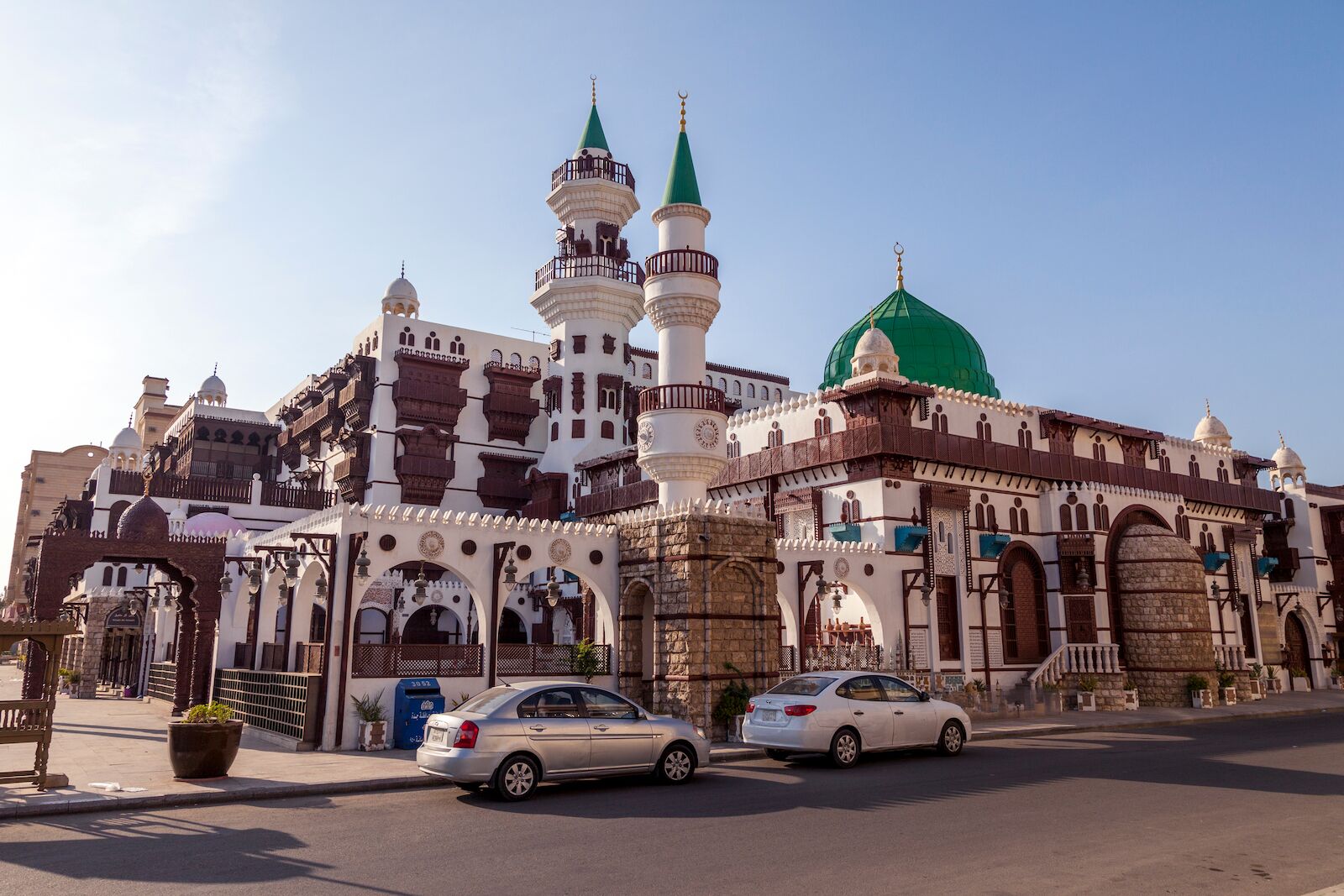In 2019, the Kingdom of Saudi Arabia officially opened its doors to international travelers, issuing tourist visas for the first time in history. Previously, only those traveling to Saudi Arabia for work or Muslim pilgrims were permitted to enter the country. Today, citizens of 57 nations, including the United States, can obtain an eVisa to travel to Saudi Arabia — and the application process is simple, fast, and relatively cheap.

How to Get a Visa to Visit Saudi Arabia and What to Do Once You Get There
- Do US citizens need a visa to visit Saudi Arabia?
- How to get an eVisa for Saudi Arabia?
- Can you get a visa on arrival in Saudi Arabia?
- Saudi Arabia visa fees
- Transit visa for Saudi Arabia
- I’m not a citizen of any of the 57 nations that can obtain an eVisa, can I still visit Saudi Arabia?
- Can tourists in Saudi Arabia visit Mecca and Medina?
- The best places to see in Saudi Arabia
Do US citizens need a visa to visit Saudi Arabia?
US citizens need a visa to visit Saudi Arabia. They can choose between applying for an eVisa online or obtaining a visa on arrival.
To qualify for an eVisa or a visa on arrival to Saudi Arabia, US citizens must be at east 18 years of age (or accompanied by a relative who is over 18 years old), and have a valid passport. Citizens of other nations may have different requirements, however.
How to get an eVisa for Saudi Arabia?
If you meet the requirements for an eVisa (for US citizens, they are: Being at least 18 years old or accompanied by a relative who’s over the age of 18, and having a valid passport), you can apply for an eVisa for Saudi Arabia online at Visit Saudi. Completing the application only takes a few minutes. Standard eVisa processing is about 72 hours, but can take longer.
Once you have obtained an eVisa for Saudi Arabia, you can stay in the country for up to 90 days. The visa remains valid for one year from its issue date and allows for multiple entries.
Saudi Arabia’s eVisa program is for tourists and Muslim pilgrims only, not for those who wish to work or study in Saudi Arabia.
Can you get a visa on arrival in Saudi Arabia?
US citizens can get a visa on arrival in Saudi Arabia if they meet the necessary requirement: Being at least 18 years old or accompanied by a relative who’s over the age of 18, and having a valid passport.
Applying for a visa on arrival in Saudi Arabia is very simple: Upon their arrival at the airport, travelers can use the self-service machine or talk to a border agent. The process takes between 10 and 30 minutes.
Once you have obtained a visa on arrival for Saudi Arabia, you can stay in the country for up to 90 days. The visa remains valid for one year from its date of issuance.
Saudi Arabia’s visa on arrival program, like the eVisa program, is for tourists and Muslim pilgrims only, not for those who wish to work or study in Saudi Arabia.
Saudi Arabia visa fees
Applying for an eVisa for Saudi Arabia costs $142 (SAR 535) and includes the application fee and the mandatory medical insurance fee.
Applying for a visa on arrival costs $80 (SAR 300), but you need to add a mandatory $48 (SAR 180) medical insurance fee, making for a total of $128 (480 SAR).
Transit visa for Saudi Arabia
Saudi Arabia offers transit/stopover visas for those who are only passing through the country. The application for a transit/stopover visa takes around three minutes and the visa is issued instantly. Transit/stopover visas for Saudi Arabia are valid for 96 hours from the time of arrival into the country. Transit/stopover visas are free but administrative fees incur and there is a mandatory medical insurance fee to pay.
Airlines Saudia and Flynas offer deals for travelers who are only passing through. You may get a free transit/stopover visa and even a free one-night hotel stay. Check out the offers on the Visit Saudi website.
I’m not a citizen of any of the 57 nations that can obtain an eVisa, can I still visit Saudi Arabia?
It’s possible for nationals from outside the 57 eVisa eligible countries to get a tourist visa , though they’ll need to apply in person at a Saudi embassy or consulate and provide additional information. Visit the Saudi Visit website and select your country of citizenship in the drop-down menu to obtain all the necessary information about how to get a visa to visit Saudi Arabia.
Can tourists in Saudi Arabia visit Mecca and Medina?
No matter their country of origin, non-Muslim travelers are still prohibited from entering Mecca and Medina. Although the two holiest cities in Islam are off limits to non-pilgrims, know that there is a lot more for travelers to see in Saudi Arabia.
The best places to see in Saudi Arabia
Mada’in Saleh (also known as Hegra or the Hegra Archaeological Site), AlUla
@matadornetwork #Hegra is Saudi Arabia's first #UNESCOWorldHeritage site IG: @thelosttwo & @Adrian Baias #ancientruins #travelsaudiarabia #bridgertonscandal ♬ original sound – ℎ
Often referred to as the “Petra of Saudi Arabia,” Mada’in Saleh is a 2,000-year-old site comprised of monuments carved in sandstone rocks, including 110 tombs, many of which are intricately decorated. This archaeological wonder and desert city became the first ever Saudi UNESCO World Heritage site in 2008.
Mada’in Saleh is located less than 40 minutes away from the city of AlUla, where outdoor adventures, including stargazing, are second to none.
The Sky Bridge at Kingdom Centre Tower, Riyadh

Photo: Fedor Selivanov/Shutterstock
If there is one building that distinguishes Riyadh’s skylines from that of other cities around the world, it’s the Kingdom Center Tower — the one with the semi-circle-shaped hole near the top. The Sky Bridge, open Saturday until Thursday from 12 PM to 10:30 PM and Friday from 4:00 PM to 10:30 PM, is the tippy-top of the tower. For about $18 (SAR 69), you’ll speed up two elevators to the top of Riyadh’s most famous landmark. (Children under the age of 10 pay $6, and children under the age of two enter for free.) For the best views of the entire city, go a little before sunset to catch daytime colors and night lights. The first three floors of the building consist of a shopping mall, while the 77th floor is home to the King Abdullah Mosque, the highest mosque in the Kingdom of Saudi Arabia.
Al-Ahsa Oasis, Eastern Province
The Al-Ahsa Oasis is the largest desert oasis in the world thanks to its 2.5 millions date palms. But the grounds of this UNESCO World Heritage site includes more than just crops. There are archaeological sites, old fortresses, canals, mosques, and other traces of human settlements that date back as far as the Neolithic period. The diversity of rock formations and water systems is complemented by the ancient sea port of Al-Uqair, and the breathtaking Al-Shu’ba Mountain.
The Saudi National Museum, Riyadh
The most renowned museum in the Kingdom, the Saudi National Museum is ideal for a rainy day or anytime you are looking to escape the dry heat if you’re visiting outside of winter. Displays and installations in all eight galleries incorporate the latest technology, and all descriptions are presented in both Arabic and English. Exhibitions focus on the history of the nation with the pre-Islamic era, the Hajj, the Two Holy Mosques, the Unification of Saudi Arabia, etc. You’ll be hard-pressed to find a better collection of Saudi artifacts anywhere else.
The museum is open from Saturday to Wednesday from 9 AM to 8 PM, and on Thursday and Friday from 2 PM to 10 PM.
King Abdulaziz Center for World Culture (also known as Ithra), Dharan
Located next to the larger city of Dammam, Dharan accommodates a world-class center of culture. Saudi Aramco, the country’s massive oil company, runs the King Abdulaziz Center for World Culture (Ithra), which comprises a library of over 325,000 books, an auditorium, a museum, a children’s museum, a movie theater, restaurants, cafés, and more. The center, whose architecture is striking, was designed by Norwegian architectural firm Snohetta.
Ithra is open from Thursday to Saturday from 4:00 PM to 11:00 PM.
Wahba Crater, Medina Province

Photo: Ajmal Thaha/Shutterstock
Wahba Crater is a volcanic crater of 10,000 feet in diameter and 1,250 feet in depth. Contrary to the surrounding desert landscape, the volcanic crater’s rim is home to shrubbery and other plants during the rainy season. And in the summer, the water that fills the crater evaporates to give way to a salt field. Wahba Crater is an incredibly unique site to visit and hike around, especially with the recent construction of roads and access points. Despite these recent developments, ensure that you take proper gear like extra water, hiking boots, and sun protection to withstand the elements. There is a visitor center nearby.
Scuba diving the Red Sea, Jeddah
Saudi Arabia has the longest coastline of the Red Sea and is famous for its colorful coral reefs, World War II shipwrecks, and biodiversity. Although year-round diving is possible, the best time of year to go is November to January when visibility is better and there’s an increased likelihood of seeing sharks and dolphins. Many scuba agencies and dive shops offer certification and tours with tons based out of Jeddah.
Al-Tayebat International City, Jeddah

Photo: Rahul D Silva/Shutterstock
This impressive, sprawling complex with ornate minarets, Moorish wood carvings, and winding passageways is a must-see when in Saudi Arabia. Inside the gates, visitors can find the Abdul Raouf Khalil Museum of Jeddah detailing the city’s history. Small shops and kiosks sell crafts and souvenirs, and you can try some of the local cuisine as you wander outside. While in Jeddah, check out the beautiful traditional buildings of the UNESCO-listed old town.